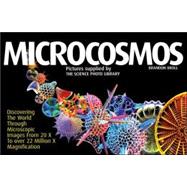
Brandon Broll trained as a research biologist before becoming a journalist specializing in science and medicine. He has published stories on subjects as diverse as brain-mapping and crash-test dummies. His work has appeared in numerous international publications, including Reader's Digest and the Guardian, and he has acted as science consultant or editor on many books.
| Foreword | |
| Microorganisms | |
| Botanics | |
| Human body | |
| Zoology | |
| Minerals | |
| Technology | |
| Photo credits | |
| Table of Contents provided by Publisher. All Rights Reserved. |
The New copy of this book will include any supplemental materials advertised. Please check the title of the book to determine if it should include any access cards, study guides, lab manuals, CDs, etc.
The Used, Rental and eBook copies of this book are not guaranteed to include any supplemental materials. Typically, only the book itself is included. This is true even if the title states it includes any access cards, study guides, lab manuals, CDs, etc.